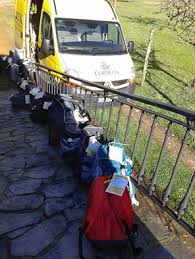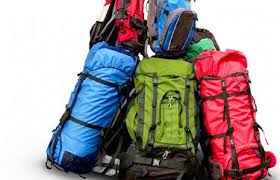
We often hear, during presentations or while addressing people’s queries directly, the same questions popping up repeatedly. Am I fit enough? Will I make it? What if I can’t finish? Safe to say, then, that many people are intimidated by the Camino de Santiago. And why wouldn’t they be? Twenty-plus kilometres in one day, same the following day, and the day after that, and so on…It’s a daunting prospect.
Sin dolor no hay Camino…
The above is a traditional Camino expression, loosely translated as, ‘There’s no Camino without suffering.’ Basically, ‘No pain no gain.’ So, there’s always going to be some degree of difficulty along the Camino. It’s an integral feature of the experience, inextricably connected to the notion of pilgrimage, both historic and modern. And, you know, we think people are okay with that. If it was a cinch, they wouldn’t do to it, right?
Camino walking days are somewhat challenging, true, but we at CaminoByTheWay make sure they’re not oppressively so. There are several key features of our Camino trips that alleviate the demands of walking over varied terrain for five to six hours per day. We’re going to discuss these features in a new series of blogs, entitled ‘Overcoming the Challenges of Walking the Camino.’ Here, in the first outing of the series, we’ll explain a service that helps you tackle the physical and mental challenges of completing one Camino stage after another, without ever diminishing the achievement of making it to Santiago de Compostela. We’re talking about luggage transfer.
 CaminoByTheWay provides daily luggage transfer services between hotels. We do this for guided group tours as well as for self-guided walkers. Here’s how it works. After breakfast, simply drop your luggage at the reception of the hotel where you stayed the night. Your luggage will then be picked up by the driver of the transfer van and shuttled to the hotel you will be staying in the following night, as per your itinerary.
CaminoByTheWay provides daily luggage transfer services between hotels. We do this for guided group tours as well as for self-guided walkers. Here’s how it works. After breakfast, simply drop your luggage at the reception of the hotel where you stayed the night. Your luggage will then be picked up by the driver of the transfer van and shuttled to the hotel you will be staying in the following night, as per your itinerary.
The benefits are obvious. For starters, instead of a heavy rucksack weighing you down, all you have to do is carry a small backpack (20L or less) containing essentials such as food, water and a light rainjacket. This will allow you to move more briskly. Walk with a pole or two and the effort is lessened even further since a pole reduces the stress on your joints, while improving your posture and mobility.
In addition, you do not have to worry about reaching a particular town by a certain time for fear of being unable to get a bed in an albergue or hostel. Nope, you can take your time and cover the ground at your own pace.
What’s more, you don’t have to pack as ruthlessly as you would if you were carrying everything in a single backpack. What better motivation is there than the thought of your luggage waiting for you upon your arrival, containing everything you need (and a little extra).
There’s another big plus to getting your baggage transferred from one overnight stop to the next. It’s a kind of ‘aw shucks’ benefit, but worth pointing out all the same. It’s got to do with the driver. CaminoByTheWay always encourages our drivers to interact with our walkers (truth is, some don’t need that much encouragement). In the case of tour groups, our drivers are often welcomed into the group and made to feel part of the whole experience. They dine with us, help us brush up on our Spanish, and contribute to the lively atmosphere of evening meals. They also offer important support if a pilgrim chooses to cut a day short in order to save themselves for the next day’s effort; our drivers will shuttle people to the next stop whenever it is required. Their contribution, therefore, cannot be overestimated.
Today, there are plenty of pilgrims who choose to have their bags transferred ahead of them. Their reasons are perfectly valid and diverse (age, fitness level, history of injury, group logistics, etc.). Whatever your reason, you still have to walk, still have to put down the time, still have to make it to Santiago de Compostela—you and only you. That is the greatest achievement of all.
Next Up: Overcoming the Challenges of Walking the Camino II: Taking breaks



Comments